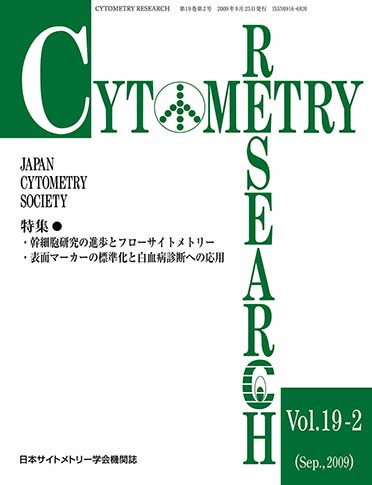Volume 19, Issue 2
Displaying 1-9 of 9 articles from this issue
- |<
- <
- 1
- >
- >|
special articles
-
2009 Volume 19 Issue 2 Pages 1-7
Published: September 25, 2009
Released on J-STAGE: June 20, 2017
Download PDF (1724K) -
2009 Volume 19 Issue 2 Pages 9-17
Published: September 25, 2009
Released on J-STAGE: June 20, 2017
Download PDF (1803K)
topics 1
-
2009 Volume 19 Issue 2 Pages 19-23
Published: September 25, 2009
Released on J-STAGE: June 20, 2017
Download PDF (2408K) -
2009 Volume 19 Issue 2 Pages 25-32
Published: September 25, 2009
Released on J-STAGE: June 20, 2017
Download PDF (1596K)
topics 2
-
2009 Volume 19 Issue 2 Pages 33-38
Published: September 25, 2009
Released on J-STAGE: June 20, 2017
Download PDF (1564K) -
2009 Volume 19 Issue 2 Pages 39-44
Published: September 25, 2009
Released on J-STAGE: June 20, 2017
Download PDF (1450K)
original paper
-
2009 Volume 19 Issue 2 Pages 45-51
Published: September 25, 2009
Released on J-STAGE: June 20, 2017
Download PDF (1886K) -
2009 Volume 19 Issue 2 Pages 53-62
Published: September 25, 2009
Released on J-STAGE: June 20, 2017
Download PDF (4189K)
review
-
2009 Volume 19 Issue 2 Pages 63-71
Published: September 25, 2009
Released on J-STAGE: June 20, 2017
Download PDF (4229K)
- |<
- <
- 1
- >
- >|
